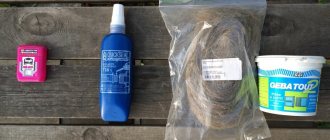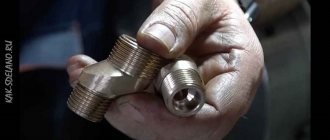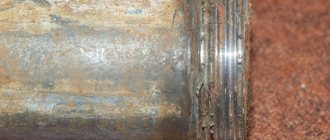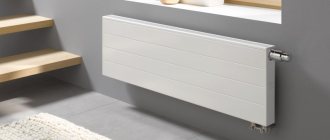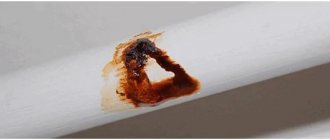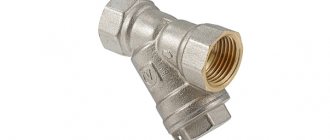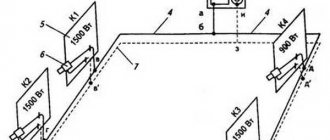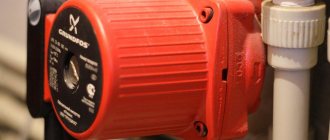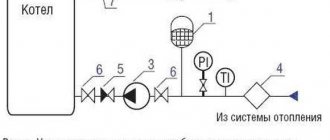New technologies for designing heating systems for low-rise private houses use several options for connecting all elements into one system. But no matter how advanced the technology, it is still impossible to bypass assembly using threaded connections in construction.
Crane groups, connections to heating registers and distribution units, all these points are connected using threaded connections. And if welding or soldering pipes allows you to create a reliable connection without the use of sealants, then if there is a thread, you cannot do without a sealant. And which seal to choose for installation is not as easy a question as it seems at first glance.
Why is additional sealing of threaded connections necessary?
So, before moving on to choosing the optimal option for sealing threaded connections, it is worth carefully studying all the options where this installation method can be used. In the heating system of an apartment or house with a gas double-circuit heating boiler, the threaded connection units will be used:
- On cold water supply taps from the water supply system;
- On the gas supply valves to the boiler there is a gas valve from the gas pipeline, a gas filter and the inlet itself into the boiler;
- On the hot water supply pipe to consumers;
- On the supply line of hot coolant to the heating system;
- On the pipe for the return supply of cooled coolant to the boiler;
- At connection points for heating devices - at the inlet and outlet of the radiator;
- On the heated towel rail (if there is one);
- There is a heated floor at the line distribution node in the system.
This number of points where a threaded connection is used is far from complete, since it describes only the minimum version of the heating system for an ordinary apartment. But even in it, each node has its own characteristics. So, for gas equipment, and a gas heating boiler refers specifically to this type of equipment, the connection of the gas pipeline must be done in strict compliance with the rules. Here it is necessary to make a reliable seal to prevent the leakage of natural gas.
At the connection point for the direct and reverse coolant supply, it is necessary to make a seal, taking into account the fact that when the coolant heats up and cools down, the metal parts will expand and contract. This means that the hermetic seal must withstand not only the maximum expansion of parts, but also ensure integrity during uneven expansion or contraction of the connection when the temperature drops.
The joints of heating radiators will also experience such mechanical stress, because when hot coolant is supplied, the metal, especially in cast iron batteries, expands more slowly than in shut-off valves made of brass or aluminum alloy.
And of course, in addition to the temperature factor, the seal must also take into account the chemical factor, because with repeated heating and cooling, the chemical composition of the water changes. Not to mention that in some systems, instead of the usual prepared water, antifreeze is poured or chemicals are added to prevent the water from freezing in the event of a breakdown.
Now that you can see how many problems can arise when operating a heating system with a minimum number of threaded connections, the importance of installing seals during installation becomes obvious.
Types and characteristics of threaded connections in the heating system
Today, when installing almost all heating systems, both new types of connecting elements and traditional options, where threads are cut on steel pipes, are used. Each type of carving has both positive aspects and disadvantages.
To choose the right seal, it is worth considering all the elements in more detail.
Cast iron radiators
For connection, both modern options are used in the form of fittings with American females, and traditional ones in the form of pipe bends on couplings with locknuts. The thread in the cast iron body of the radiator nut has chips and irregularities, and can also be cut at an angle, which complicates the selection of threads on the fitting. In this unit it is necessary to use a sealant that will ensure reliable filling of all voids along all thread turns.
Drives and couplings
Threaded connections of pipes and couplings also have their disadvantages. During work, the thread is cut with a margin of 3-4 turns, while the pipe profile itself may have significant deviations. Simply put, it may not be round, which is why the threads are of different depths and profiles - from triangular with an acute angle to trapezoidal. A nut and coupling made of cast iron may also have thread defects in the form of chips, broken threads, different heights and depths of threads. Such a connection requires that the seal not only fill all the cavities, but also be elastic - when screwing a cast iron coupling onto a rigid seal, it can simply burst.
Fittings with American women
Fittings with American females produced by well-known manufacturers of shut-off and connecting valves have standard threads made in accordance with high quality standards. At the same time, this threaded connection also requires sealing since the thread most often has great depth and clear edges.
Sealing with plumbing thread
A prerequisite for applying thread is a thread with notches. If the thread is smooth, then a wrench should be used to apply notches. The thread is wound starting from the third turn. Despite the fact that it is written on the thread that you can wind it any way you like, it is best to wind it carefully, so that there are no free spaces.
After this, the thread should have free first two turns, just like in the case of flax, and a seal on the last two turns. If the procedure is performed correctly, with strict adherence to technology, the sealing of threaded connections will be reliable and will last a long time.
Materials for sealing threaded connections
Today there are no highly specialized materials for sealing one or another type of threaded connection. The materials on the market are applicable to almost all installation points and materials, however, provided that the work is carried out by an experienced specialist. Therefore, it is important to know and understand all the strengths and weaknesses of sealing materials.
End gaskets
Installing a sealing end gasket between parts in modern heating systems has very limited use. At the same time, this option can well be used for end-tightened connections. For installation, paronite, fluoroplastic or rubber gaskets are used. The positive side of this method is the ease of installation and reliability of the connection. The clamped gasket between the two planes ensures both tightness and reliability of the connection. The disadvantage of this method is that when clamped, the gasket is deformed, and quite often it simply narrows the internal lumen. Such a narrowing negatively affects the fluid flow rate, which ultimately leads to a loss of temperature in the coolant and slow heating of heating devices.
Another disadvantage is the need to carefully prepare the joint surfaces so that during installation there is no misalignment of the gasket. For those who do not have experience installing such gaskets, it is recommended to have 1-2 gaskets in stock, since if installed incorrectly after disassembly, the gasket is not reused, but replaced with a new one. Another tip is that it is recommended to apply sealant to the gasket before installation to ensure that all voids are filled as tightly as possible.
It is recommended to purchase gaskets for installation for heating systems, although almost all gaskets made of rubber, paronite and fluoroplastic can withstand temperatures of +100-120 degrees, not all react equally to contact with water and antifreeze.
FUM tape
PTFE tape is actively used for installation of water intake fittings for hot and cold water supply systems. It is also used for heating systems. Compared to other types of materials, it is easy to use, perfectly seals the connection and does not lose its properties during operation. The latter is very important when carrying out repair work - such connections can be easily dismantled even after many years of active use.
FUM tape is available in several sizes, which allows you to choose the right option for the job. A positive point is that it does not react with water and antifreeze. It also easily withstands high temperatures and repeated heating-cooling cycles.
However, when working with it you need to consider:
- When sealing connections with very tight threads, it will tear and be squeezed out when screwing on the thread;
- If the connection is not tight, leaks are possible, since the tape is not able to adhere to the metal and expand in volume upon contact with water;
- When used, it is most effective on connections up to 25 mm, so when screwing a plug or nut into a cast iron battery, it is worth using another material for sealing.
Sealing thread
This is a relatively new material for filling cavities between joint parts. The thread is made of Teflon or fluoroplastic. Therefore, it has approximately the same properties as tape. But, given that it has a different cross-section and fills the cavity between the turns more tightly, its use for sealing becomes more attractive.
In addition, there are samples of plumbing thread that consist of several fibers; these types are recommended for use with liquid sealants.
Hemp or linen span
A material of plant origin traditionally used in sealing threaded connections. To seal threaded connections, it is used in conjunction with liquid or gel sealant.
Flax is used for installation in connections of large and small diameters. When used correctly, linen can last quite a long time. The truth has significant drawbacks:
- Not everyone can wind a flax span correctly and not the first time; the work requires experience and dexterity;
- As a material of plant origin, it has a limited service life;
- Reacts to changes in temperature and humidity, reacts to chemically active substances;
- During repairs, great effort is required to separate the joint, which was sealed with flax span.
Chemical sealants
The basis for the production of this group of materials is silicone. Among the advantages of silicone is its stability at high temperatures and neutral reaction with most chemically active substances.
During installation, silicone sealants provide lubrication of rubbing surfaces, making it easier to twist threads. After installation, the substance fills all cavities and ensures reliable connection.
There are drying and non-drying sealants. When sealants dry, after a certain time they become viscous or turn into a solid state. This group distinguishes between sealants that dry when exposed to air - the anaerobic type and substances that change their state upon contact with water.
The disadvantage of this group of sealants is that when they dry, they shrink, which means that over time, the coolant may start dripping in this place.
Non-hardening sealants remain liquid or gel-like for a long time, so such materials are easy to apply and, even after prolonged use, the joints are easy to dismantle. On the other hand, during installation and operation, there is a high probability that such sealant may be squeezed out of the thread.
Anaerobic adhesive sealants
Anaerobically curing gel sealants are ideal for sealing metal threaded connections. They penetrate even the smallest cracks and gaps and undergo polymerization when contact with oxygen ceases. Under normal conditions, sealants remain liquid for a long time, but as they harden, they turn into a durable mass like plastic.
Using anaerobic sealant is very simple. It can be applied to the thread with a brush or squeezed out of a tube, then smeared and tightened. After 15–60 minutes, the joint will be completely sealed, but another day must pass before the gas equipment can be used. The most popular brands of anaerobic compounds are:
- "SantechMaster";
- Loctite 577;
- Loxeal 58;
- Unitec EASY.
Rules for the use of materials when installing threaded connections
Linen is one of the most affordable and time-tested materials for sealing. It is best used to seal metal and cast iron joints. It is excellent for working on cast iron radiators, steel pipes and cast iron couplings. But to seal connections made of plastic and thin-walled elements, you should not use flax; with a slight increase in the effort when tightening, the thin metal or plastic will simply tear.
To work with tow, in addition to the flax itself, you also need to have a sealing material - packaging paste, synthetic sealant, oil paint or vegetable oil. It is not worth using synthetic alkyd or nitro enamel instead of oil paint; this will not help make the work easier and increase the bond, but during inspection it will make the work much more difficult.
A fresh bunch of flax tow is selected for work. The material must be well dried and have a natural color and smell. Brittle fibers or the smell of rotten hay indicate that the material is unsuitable for work - in just a few weeks this compound will have to be repacked.
The algorithm for working with flax tow is as follows:
- Before work, the parts to be connected are twisted “dry” without a seal to determine the number of turns in the twist;
- Notches are made on the external thread, this applies primarily to steel parts. This is not recommended for nuts made of cast iron - it is too fragile for such work;
- A strand is selected from the bundle of such a size that when twisted into a thread, it fills 2/3 of the height of the thread;
- The strand is combed out and smoothed; there should be no thickened areas or split ends;
- The twist is divided into 2 parts - the smaller one should be 3-4 times the length of the thread circumference;
- Stepping back from the edge of the thread 1.5-2 turns, flax is applied to the thread at the point of division into segments. The smaller segment is placed perpendicular to the thread and pressed with the thumb;
- The larger segment is screwed onto the thread with tension, so that after making a full turn, it completely presses the smaller segment onto the thread;
- After the second turn, both segments are wound with one bundle to the end of the thread;
- At the end of the thread, without changing the direction of winding, a thickening is made - a bead and then winding is made to the beginning of the thread;
- After the entire bunch of flax has been wound onto the thread in the direction of movement, the winding is smoothed;
- At the final stage, plumbing paste or silicone sealant is applied to the surface.
When winding flax, an indent of one and a half to two turns of thread must be made to facilitate screwing the thread. In modern fittings, the threads initially have notches, so it makes no sense to make additional notches.
As for sealing paste or silicone, for a tight connection it is enough to impregnate the top layer of hemp, although if you impregnate the entire winding or pre-treat the external thread there will be no mistake.
How to work with FUM tape
Working with FUM tape is much easier and simpler than with other materials. True, unlike other materials, this must be done carefully and competently.
First of all, you need to pay attention to which connections are to be sealed. The larger the thread diameter, the thicker the tape needs to be selected. The second point is that the width of the tape should be no less than half the length of the thread. It is inconvenient to work with a tape that is too narrow, and you will have to wind it much more.
After selecting the tape, the operating algorithm is as follows:
- Both parts are twisted without a seal, and the number of thread turns is determined;
- Afterwards, the thread is inspected - if for a hemp seal it is important to make notches on the external thread, then for FUM tape this is not necessary, the tape fits perfectly on the metal without additional notches.
- The next step is to inspect the internal thread - its edge should have a chamfer, so that when screwed on, it does not tear the tape but bends under itself;
- Stepping back 1-2 turns of thread from the edge, apply the tape and press it with your thumb;
- The seal is wound in the direction of the thread - for right-handed in the direction of movement clockwise, for left-handed counterclockwise;
- The tape is wound with little effort and tension, so that when the first turn of the tape passes, all the contours of the thread are visible, but the tape does not break through;
- After winding 3-4 turns, the winding is done further in the direction of the thread;
- 2-3 turns before the end of the thread, a thickening is made - a bead made of an additional 3-4 turns of tape.
After winding is completed, the edge is simply smoothed in the direction of movement. The tightening is done manually until significant resistance begins, then it is pressed using keys.
Sealing thread for sealing threaded connections
This type of sealing material became known relatively recently. It is based on polyamide or fluoroplastic fibers. It can be a monolithic thread or a thread consisting of several fibers. The cross section of the thread is most often round or oval. The advantage of thread is that, unlike tape, it is stronger and cannot be torn by hand. It is more elastic and better suited for filling external threads than tape, here you can see how much the thread has filled it. In addition, elasticity makes it possible to more reliably seal cavities in the thread, since after compression it tends to return to its original shape.
To work with small-diameter connections, it is recommended to use a thread of a smaller diameter; for large diameters, it is recommended to use a thread of a larger diameter.
When working, it is recommended to adhere to the following algorithm:
- Check how the internal and external threads fit together;
- Check how the chamfer is removed on the internal thread, if necessary, make it;
- Having retreated 1-2 turns from the beginning of the thread, press the thread to the thread, leaving the tip 2-3 cm free;
- Start winding the thread along the thread with a slight tension so that it is evenly distributed over the depressions;
- Through the turn, press the remaining tip to the thread;
- Continue winding to the edge of the thread;
- Having reached the edge, make a bead and, without changing the direction, continue winding to the beginning of the thread.
Considering that plumbing thread like FUM tape is made from synthetic materials, it does not need to be coated with silicone sealant or plumbing paste.
Plumbing glue sealant
Today, plumbing adhesive sealant is one of the newest and most promising means of sealing threaded connections. This is a rather specific type of seal and must be used carefully, given its price.
There are several types of plumbing adhesives on the market today - one-component, ready-to-use products. Two-component formulations that must be prepared before use by mixing in a certain proportion. And third, adhesives that are applied to metal heated to 100-120 degrees.
This type of sealant has wider application prospects than flax with FUM tape. Using glue, you can seal and fix not only metal joints, but also metal and plastic, which is very important when installing a heating system.
However, like any other promising technology, the use of glue also has certain disadvantages. First of all, most compounds glue degreased metal joints. This is a significant disadvantage of the technology, since most radiators, metal steel pipes and couplings have greasy stains on their surface. The fact is that to protect the metal surface from corrosion, lubricants and compositions that contain machine oil or grease are used. During turning, when a thread is cut into a piece of pipe, a greasy lubricant is applied, and after machining, the couplings and locknuts are simply dipped into machine oil for cooling.
The second downside is using heat to get a reliable connection. And although not all compounds require this operation, it significantly limits the use of glue for sealing threads.
Well, the last drawback of plumbing glue is that after applying it to the surface and joining the parts, it takes time for the glue to simply dry. And this significantly increases the installation time of the system.
But, despite the disadvantages, adhesive technology is increasingly making its way into the market, improving every year. Today, the general scheme for working with glue is as follows:
- After checking the threaded connection “dry”, the parts are unscrewed;
- Both halves of the thread are treated with a degreasing spray or denatured alcohol;
- The tube with glue is opened, and the glue is carefully applied evenly along the entire length of the external thread;
- When applying glue, do this as carefully as possible to prevent drips;
- Next, the parts are connected and finally clamped with a key;
- To allow the glue to harden, the parts are set aside for the time specified in the instructions for the glue.
Anaerobic sealant
This type of sealing material, like glue, belongs to a new generation of synthetic materials. Like adhesives, they are offered ready-made in small packaging. This must be taken into account when planning purchases, since one tube is usually enough for 2-3 compounds.
There are two ways to use anaerobic sealant - the first involves its independent use without additional funds. The second option involves the use of anaerobic sealant as an additional means for impregnation or strengthening of the connection. In the first case, the sealant fills the voids in the thread with the outer and inner parts tightly fitting. The second is used when installing connections that have a sufficiently large gap between the parts.
The effect of this sealant is limited by the time of its contact with air. Most often, literally 5-7 minutes after application, the process of active polymerization of the gel begins, and it first begins to form a film, and then the process moves to the inner layers.
The process is usually completed 15 minutes after contact with air. This time is enough to not only apply, but also fix both parts.
The disadvantage of this technology is the need to work with clean, fat-free material. In addition, if a mistake is made and the connection is made incorrectly, after disassembly, considerable effort will be required to clean the threaded areas from glue residues.
How to hermetically connect pipes with flax?
When starting to seal threaded connections, it is important to be very careful. Accuracy is the key to ensuring that there are no leaks. To work, you need to acquire a special paste, which is applied to the thread or to the already wound flax.
This paste has one obvious disadvantage: it gets dirty, and it’s quite difficult to wipe your hands off of it. In this regard, installers have the following rule: initially flax is wound on the thread, after that the quality of the winding is checked (it is important that there are no unevennesses) and after that the paste is applied. The connection must be free of protruding hairs, the first two turns remain free so that you can safely screw the coupling onto the external thread. And towards the end of the thread a certain ridge or thickening is formed.
Inch threads have a conical shape. And the entire compaction process is carried out on the last two threads. They are not completely cut through, and are smaller in size than the other turns. They are sealed, sealing material is glued between the two parts. And after that the paste is applied.
Which seal is best to choose for installing a heating system?
Today, the main criteria for choosing the best technology for sealing threads in heating system connections are experience and materials to work with.
So, when working with cast iron radiators and shut-off valves, the best option for them is to use flax strands with plumbing paste or silicone heat-resistant sealant.
For small diameter connections up to 25 mm from branded fittings, it is recommended to use FUM tape or adhesive sealant.
To install taps or connect steel, aluminum or bimetallic radiators, you can use the entire arsenal of methods for sealing connections.
The only point that you need to pay attention to is that when installing copper pipelines, you must carefully study the instructions for the sealant in order to exclude incompatibility between the composition of the adhesive and the non-ferrous metal.
Video description
Anaerobic adhesive sealant.
Tapes made from fluoroplastic
This material is also called FUM tapes. It is often used as a sealant when connecting pipes. Its important feature is that it is not wetted by water, fats, or solvents.
FUM tape for sealing joints Source kraska.guru
